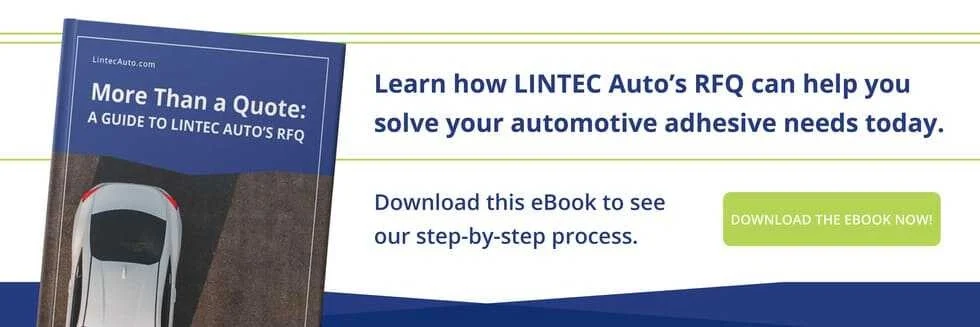The Role of Sustainability in the Automotive Adhesives Industry

Across industries, brands have increasingly prioritized sustainable products and manufacturing practices as many consumers have shifted to be more environmentally conscious in their purchasing habits. Within the automotive industry, due to the conspicuous relationship between gas-powered vehicles and climate change, it’s become critical for automakers to demonstrate their commitment to sustainability. This accounts for the rising popularity of hybrid and electric vehicles.
But there are many other ways to design sustainable vehicles beyond EV—and now that EV has become such a norm, producing electric vehicles isn’t enough for an automotive brand to distinguish itself as more sustainable than its competitors. What many people don’t realize is just how far adhesives can go toward creating environmentally-friendly vehicle designs.
Manufacturing
When it comes to automotive manufacturing, adhesives are faster and more efficient than their traditional alternatives such as metal fasteners and chemical coatings. When vehicles are manufactured more quickly, the total manufacturing and assembly process uses less energy. This is one way in which adhesives allow vehicles to be more sustainable. And, as a bonus for automakers, faster manufacturing is more cost-effective, giving adhesives more than one advantage against their alternatives.
Energy Control
Automotive adhesives can provide you with heightened control over a vehicle’s energy consumption, allowing for the minimization of energy waste. There are adhesive solutions that cater to impacts, vibrations, conductivity, heat, and UV radiation respectively for both absorption and deflection purposes.
Adhesive Films for Glass
When applied to glass, adhesive films control the impact of the sun’s energy on the vehicle. They repel UV rays and improve car cabin insulation. This better regulates the vehicle’s temperature; on hot days, drivers won’t need to rely so heavily on their vehicle’s AC. Glass adhesives mitigate a vehicle’s energy consumption.
Structural Adhesives
Structural adhesives join dissimilar auto parts together and are the superior alternative to solutions such as metal fasteners like bolts. Structural adhesives offer more versatility than other fastening solutions because they can create both flexible and rigid bonds. Both flexible and rigid bonds are useful for energy efficiency. Rigid bonds allow separate parts to function together as a unified piece of equipment, thus boosting the efficiency of energy transmission between those parts. Flexible bonds, on the other hand, do not transmit energy, but diffuse it. Either way, energy is distributed efficiently throughout the vehicle.
Flexible Automotive Adhesives
The term flexible automotive adhesives can refer to a number of different products, including soft foam tapes and epoxy-based acrylic adhesives. The common theme between these subtypes of flexible adhesives is that they work to dissipate shocks and vibrations that a vehicle sustains while driving. This preserves the vehicle’s structural integrity by distributing force evenly throughout the vehicle. The environmental benefit is sustained vehicle quality over time; longer-lasting vehicles mean less material and manufacturing waste.
Incorporate Adhesives into Your Designs
If you’re ready to cut costs, improve sustainability, and appeal to a broader customer base by implementing the use of automotive adhesives, get in touch with our team of experts at Lintec Auto.

